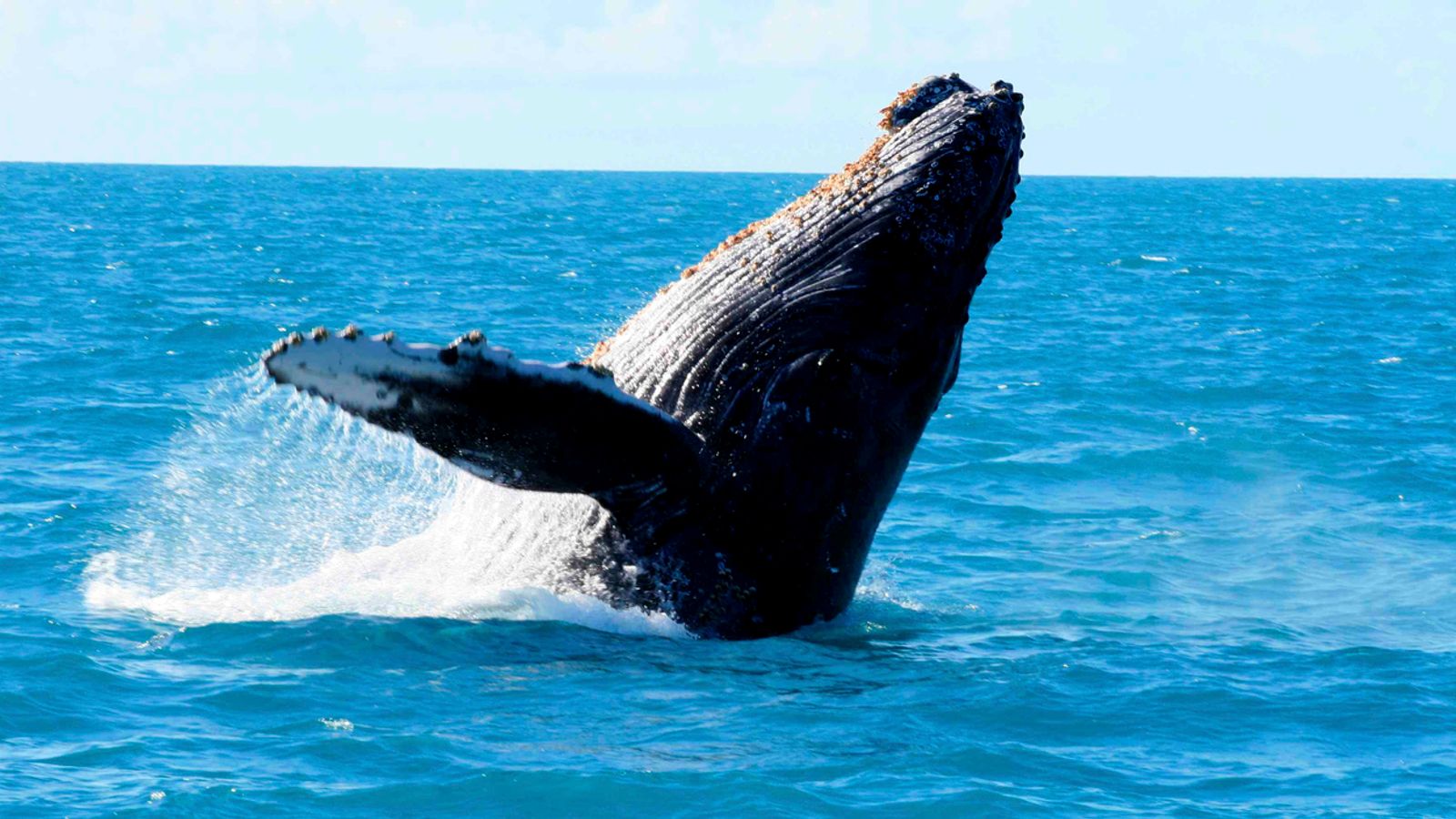Baleen whales have long been thought to sing to each other in a way scientists couldn’t identify – but new research has uncovered how the world’s largest mammals communicate.
The species – which includes humpbacks and blue whales – use low-frequency sounds of up to 300Hz to speak underwater, which are absorbed less rapidly in the ocean.
Scientists have now found that the mammals have unique structures in their larynx which lets them to speak, direct themselves and find mates.
For their study, researchers from the University of Southern Denmark analysed the voice boxes of sei whales and humpback whales, and were able to simulate how air would flow within this organ to produce sounds.
They found the whales had a large U-shaped structure made up of long cylinder-shaped tissues called arytenoids that are fused at the base.
Read more:
Why grey squirrels outcompete red
Dropped your iPhone in liquid? Don’t put it in rice
The structure, which only exists in baleen whales, allows them to use air to generate low-frequency sounds in the ocean and helps with their “explosive” surface breathing.
Coen Elemans, professor at the University of Southern Denmark’s department of biology, said: “We found that this U-shaped structure pushes against a big fatty cushion on the inside of the larynx.
“When the whales push air from their lungs past this cushion, it starts to vibrate and this generates very low frequency underwater sounds.
“Our experiments showed for the first time how the whales make their very low frequency vocalisations.”
But the team said the whales’ songs clash with human-made noises in the ocean, which typically range between 30-300 Hz.
The researchers wrote in the journal Nature that baleen whales can only communicate at a maximum depth of 100 metres below surface, where they are likely being drowned out by the noises generated by maritime traffic, and called for better regulation to protect the species
Prof Elemans added: “Compared to the ’70s, our oceans are now even more filled with human-made noise from shipping lanes, drilling activity and seismic guns.
“We need strict regulations for such noise, because these whales are dependent on sound for communication.
“Now we show that despite their amazing physiology they literally cannot escape the noise humans make in the oceans.”
Baleen whales are some of the largest animals on the planet, and can grow up to 100ft and weigh as much as 200 tonnes.
They are named after the baleen plates made of keratin – also found in fingernails and hair – in their mouths, which they use to sieve plankton and other small organisms from the water.












Post comments (0)